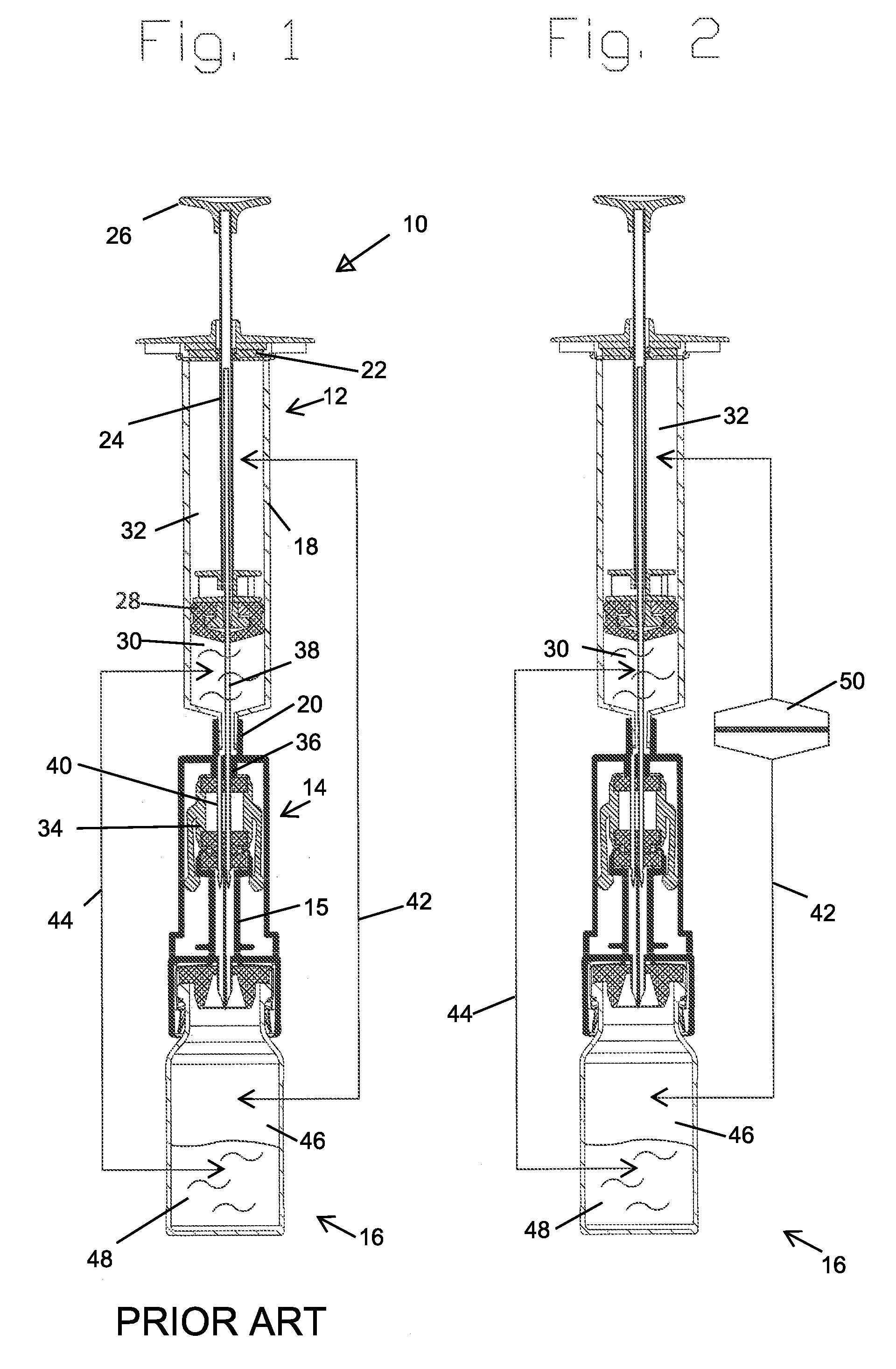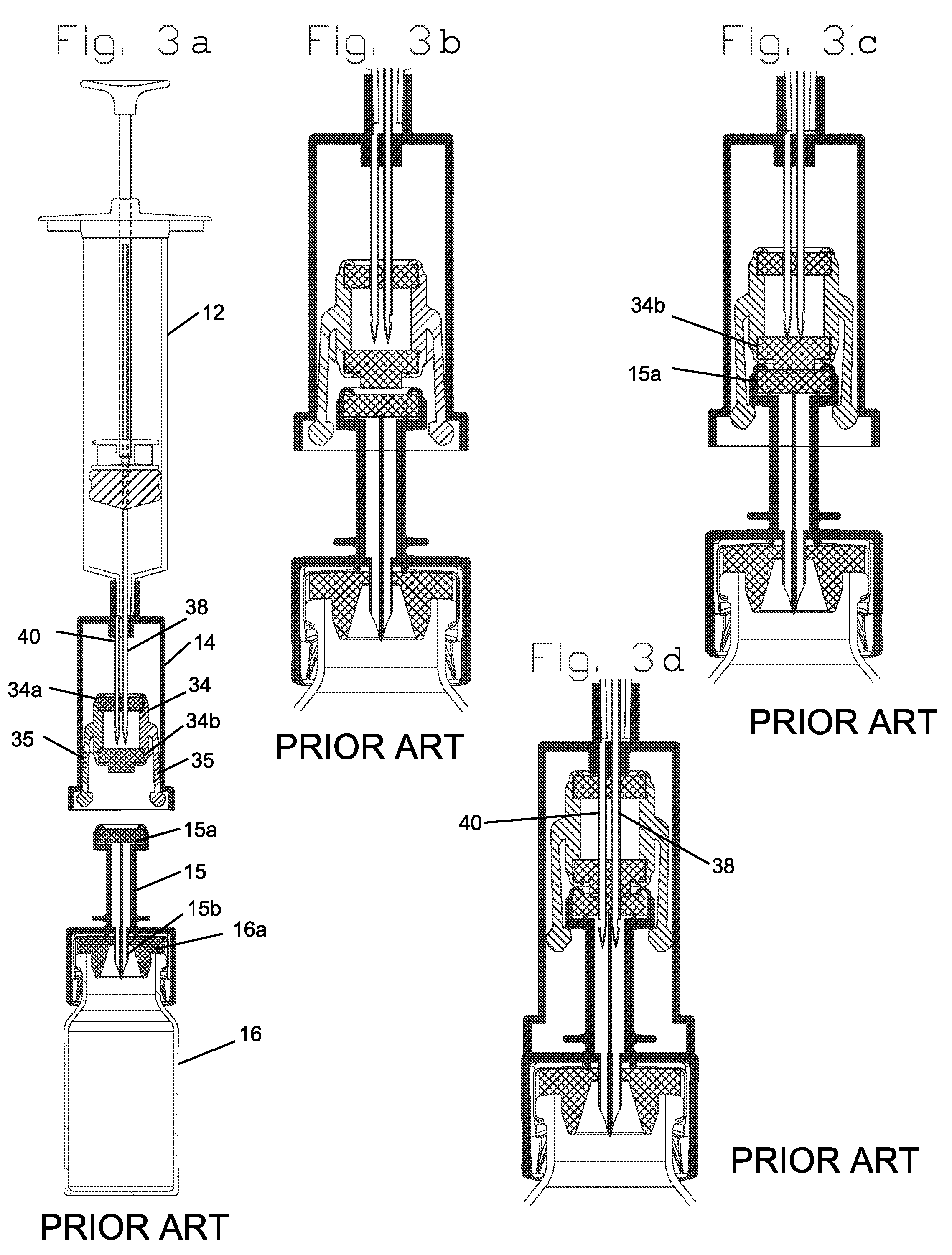Closed drug transfer system
a drug transfer and closed technology, applied in the direction of diagnostics, special packaging, packaged goods types, etc., can solve the problems of increasing the risk of developing health fatalities, drug exposure to drugs and their vapors, and significantly increasing the risk of drug exposure and vapor exposur
- Summary
- Abstract
- Description
- Claims
- Application Information
AI Technical Summary
Benefits of technology
Problems solved by technology
Method used
Image
Examples
Embodiment Construction
[0131]The present invention is improvements to the drug transfer apparatus described in U.S. Pat. No. 8,196,614. These improvements overcome problems discovered during the commercial development of the apparatus and contribute to the safety of the transfer procedures carried out with them. Some of these improvements are specific to the embodiments of the apparatus described in U.S. Pat. No. 8,196,614 and others can be used with other prior art or new devices.
[0132]FIG. 2 schematically shows a first solution provided by the present invention to the problem of liquid being accidentally forced into the air chamber of the syringe. The solution, as shown symbolically in the figure is to introduce a hydrophobic filter membrane 50 at some point in the air channel 42 between the vial 16 and the proximal air chamber 32. Such a filter, e.g. a 0.22 micron filter, will not only prevent passage of liquid into the proximal air chamber but also will improve the protection against microbial contami...
PUM
 Login to View More
Login to View More Abstract
Description
Claims
Application Information
 Login to View More
Login to View More - R&D
- Intellectual Property
- Life Sciences
- Materials
- Tech Scout
- Unparalleled Data Quality
- Higher Quality Content
- 60% Fewer Hallucinations
Browse by: Latest US Patents, China's latest patents, Technical Efficacy Thesaurus, Application Domain, Technology Topic, Popular Technical Reports.
© 2025 PatSnap. All rights reserved.Legal|Privacy policy|Modern Slavery Act Transparency Statement|Sitemap|About US| Contact US: help@patsnap.com



